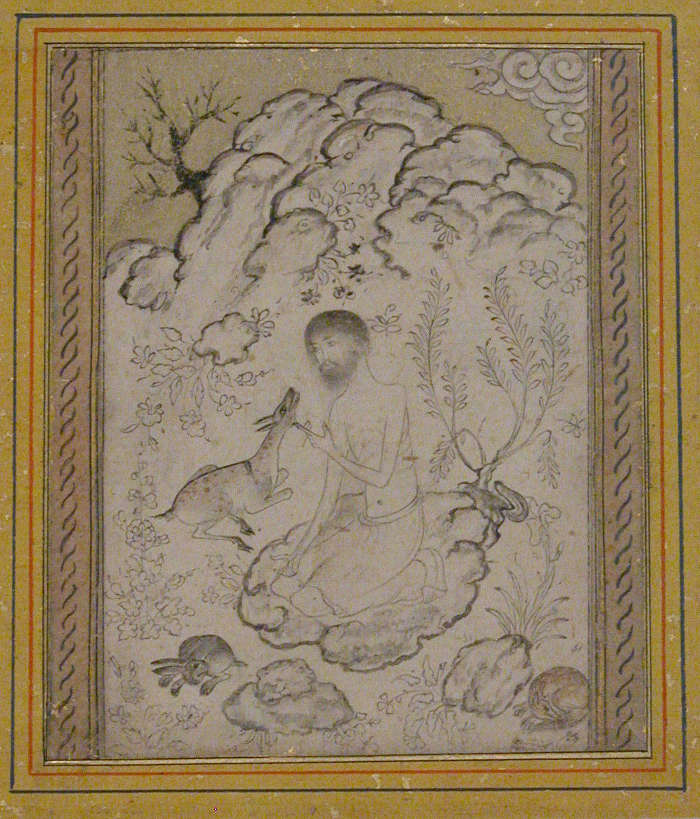FWP:
SETS
DESERT: {3,1}
ZARRAH: {15,12}
For background see S. R. Faruqi's choices. This verse is NOT one of his choices; I thought it was interesting and have added it myself. For more on Ghalib's unpublished verses, see the discussion in {4,8x}.
In a variant of the 'kya effect', kis qadar can be of course be an exclamation of amazement ('To what an extent...!') as in (1a). But it can also be a question ('To what extent...?) as in (1b), posed by in inquirer who is trying to understand the appearance of the desert.
Every sand-grain seems to be imprinted with, to be the very image of, the 'suvaida'-- the 'dark spot in the heart'-- of the desert. On the complexities of the suvaidā , see {3,2}.
What exactly is the connection with Majnun? Of course, Majnun lived in the desert; he in fact haunted the desert, it was his 'haunt'. In a number of verses Ghalib plays with this relationship. In particular, consider {140,6}: every dwelling is honored according to the status of its dweller, and when Majnun dies the whole wilderness is left 'solitary, sad'. From there, it's not such a leap to imagine that when Majnun's heart breaks down into dust, every sand-grain with which this dust has mingled would reflect or mirror, or even itself contain, the 'dark spot in the heart' of Majnun-- and/or of the desert, since in the ghazal world Majnun himself is somehow the spirit, the 'heart', of the desert.
Or consider {214,2}, in
which the whole world, 'from end to end', literally 'is' the dust of the desert/wildness/madness
[vaḥshat] of Majnun. If his madness can thus spread
itself so powerfully and pervasively, why wouldn't every sand-grain in the
desert resemble, or contain a fraction of, the 'dark spot in the heart' of
someone like him, or of a desert like his?

Asi:
Oh my God, to what an extent the heart of Majnun has finally turned to dust, how it has mingled into the dust! -- such that the form of every sand-grain has become the 'suvaida' of the heart of the desert! And just this is the sign of its having become dust.
== Asi, p. 55